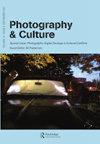Imagining the Divine
IF 0.3
4区 艺术学
0 ART
引用次数: 0
Abstract
Historical records indicate that, from as early as the 6th century, Chinese traders and Indian Brahmins were already settled in the Malay Peninsula (Lee 2018). Along with a large community of Arab traders since the 1100s, these communities have shaped a vibrant cultural cosmopolitanism in the peninsula that lasted till the nation’s independence in 1957. While many practices of this historical cultural cosmopolitanism have since evolved or ceased altogether in contemporary Malaysia, larger and more popular cultural expressions are still being articulated in new ways and forms (Keoy et al. 2022a, 2022b; Lee 2019, 2022). One of these expressions is the Malaysian Chinese, Nine Emperor Gods, Taoist festival. Like many traditional religious beliefs, there are multiple versions of historical accounts relating to the identities of the Nine Emperor Gods prior to their canonization as deities. There are also a comparable number of differing accounts about the start of this religious movement (Cheu 1996, 51-55). One popular account tells of nine brothers from a fishing village in Fujian Province who helped the last prince of the Ming dynasty in his escape to Thailand. They arrived in Songkhla, navigating by the nine northern stars. Shortly after their arrival, they disappeared together with the nine stars. In their place, nine censers – thought to be the manifestations of the nine brothers – were found floating on the sea near Songkhla. It is believed that though their spirits ascended to the southern heavens, they return to visit the Chinese regional community during a yearly tour of the South Seas. This account explains why the festival is observed by devotees in Thailand, Singapore, and Malaysia, and provides the reason for performing the welcoming ritual at a waterfront (Cheu 1996, p. 54). The festival is celebrated from the first to the ninth day of the ninth lunar month every year and begins with an Amoy opera (in the Fujian, Guangdong operatic tradition) that denotes the start of the Taoist rituals that would be held in celebration of the nine deities. A street procession that comprises devotees carrying symbolic palanquins and prayer statues, a Chinese musical ‘percussion’ troupe, and sword-wielding as well as skewer-bearing spirit mediums, will make its way from the devotees’ temple to a nearby waterfront at the appointed time. With the welcoming ritual, the spirit mediums invite the nine deities to return with them to the temple where they will be entertained (by the percussion music and the Amoy opera, among others) and worshiped for the nine days. The想象神圣
历史记录表明,早在6世纪,中国商人和印度婆罗门就已经在马来半岛定居(Lee 2018)。自11世纪以来,这些社区与大量阿拉伯商人一起,在半岛上形成了一种充满活力的文化世界主义,这种世界主义一直持续到1957年国家独立。尽管这种历史文化世界主义的许多实践在当代马来西亚已经演变或完全停止,但更大、更流行的文化表达仍在以新的方式和形式表达(Keoy等人,2022a2022b;Lee 20192022)。其中一个表达方式是马来西亚华人,九皇神,道教节日。与许多传统宗教信仰一样,关于九皇神在被封神之前的身份,有多种版本的历史记载。关于这场宗教运动的开始,也有相当数量的不同说法(Cheu 1996,51-55)。一个流行的说法告诉了来自福建一个渔村的九兄弟帮助明朝最后一位王子逃往泰国的故事。他们在九颗北极星的指引下抵达宋克拉。他们到达后不久,就和九星一起消失了。取而代之的是,九个香炉——被认为是九兄弟的化身——被发现漂浮在宋克拉附近的海面上。据信,尽管他们的灵魂登上了南方的天堂,但他们在每年的南海之旅中都会回到中国的地区社区。这篇报道解释了为什么泰国、新加坡和马来西亚的信徒会庆祝这个节日,并提供了在海滨举行欢迎仪式的原因(Cheu 1996,第54页)。每年农历九月初一至九日是这个节日的开始,以厦门戏(闽粤戏曲传统)开始,这标志着道教仪式的开始,道教仪式将举行以庆祝九神。一支由奉献者组成的街头游行队伍将在指定时间从奉献者的寺庙前往附近的海滨,他们携带着象征性的轿厢和祈祷雕像,一个中国音乐“打击乐”剧团,以及挥舞着剑和串着串的灵媒。在欢迎仪式中,灵媒邀请九位神与他们一起返回寺庙,在那里他们将受到娱乐(打击乐和厦门歌剧等),并在九天内受到崇拜。这个
本文章由计算机程序翻译,如有差异,请以英文原文为准。
求助全文
约1分钟内获得全文
求助全文

 求助内容:
求助内容: 应助结果提醒方式:
应助结果提醒方式:


